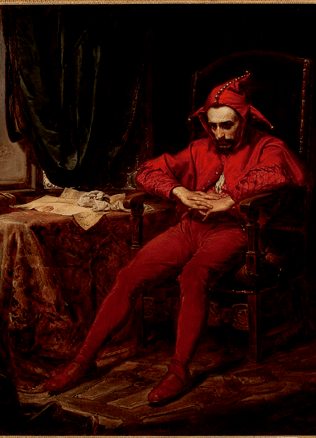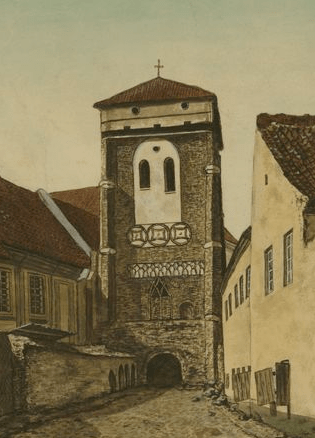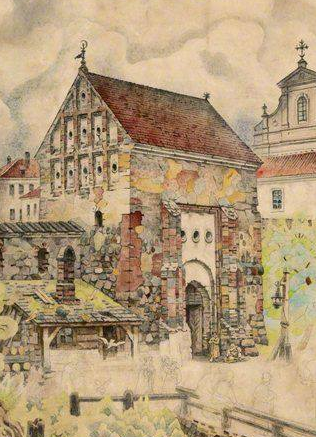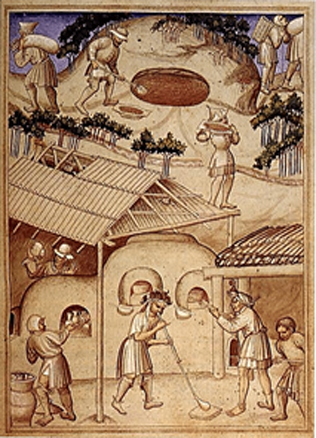“Bogurodzica”: the hymn Lithuanians led to the Battle of Grunwald
Bogurodzica (Pol. Birth-Giver of God) is the oldest Polish religious hymn, popular in Middle Ages, sung by the Polish knights and known as the anthem of Poles. Furthermore, it was taken over by the Lithuanian society. What makes it so special?
The mysterious prayer of the Middle Ages
The hymn consists of three parts, differing in the time of composition, the topic depicted, melody and other features. The oldest part of the hymn (1–2 stanzas) is regarded as the genuine part of Bogurodzica). Most researchers think that the poem must have been composed in the 13th century, though some trace its origins back to as early as the late 10th century. The legend originating in the 15-16th centuries identifies Bishop St. Adalbert (Wojciech) as its author. Today, the consensus has been reached that Bogurodzica might have been created by a monk, quite likely a Dominican or a well-educated knight, exposed to the influence of both Catholic and Orthodox liturgical poetry, in particular Czech.
According to researcher Roman Mazurkiewicz, the full meaning of the hymn, abounding in “heavenly mysteries,” can only be disclosed after its religious meaning has been understood. The oldest part of the hymn is a verse prayer, which is actually an address to Jesus Christ through the Blessed Virgin Mary and St. John the Baptist. According to researchers, it reflects the images well known in iconography such as Trina Sanctitas and Deesis (in Greek meaning a request, a prayer), at the centre of which Judge and Saviour the Christ is shown, on both sides of the God, the images of Blessed Virgin Mary and St, John the Baptist (or Apostle and Evangelist John), intercessors of praying believers are portrayed. Namely this image is regarded as forerunner of Bogurodzica.
Do You Know?
Bogorodzica (Birth-Giver of God) is the oldest Polish religious hymn, popular in the Middle Ages, which was taken over by Lithuanian. According to Jan Długosz, Bogorodzica was sung by joint Polish and Lithuanian troops before the great victory of the Battle of Grunwald. It was also sung asby the forces of the Grand Duke of Lithuania Sigismund and Polish troops during the Battle of Pabaisk in 1435. Following the Polish tradition it was included into the First Lithuanian Statute.
Other parts of Bogurodzica, originally sung as separate hymns, were composed and attached to the txt in the 15th-16th centuries. This is the Easter hymn (3-6 stanzas) and Christ’s Suffering hymn (7-15 stanzas), to which 14 additional stanzas, dedicated to various saints, are attributed.
State life with a hymn sung
In Poland, Bogurodzica was originally sung in churches during religious processions, religious services, during Mass and other religious services. Religious festivals were held to honour both the hymning of and listening to the Bogurodzica. There is no mention of the date when Bogurodzica became known to Lithuanians. The underlying basic doctrines of faith and ethical norms reflected in the text make Bogurodzica a Catechetic hymn. In such a case, could it have been hymned during the times of Lithuania’s baptism?
Do You Know?
In the 14-15th centuries, the hymn was more and more widely sung. Its significance kept changing accordingly. A calm and complicated melody of Bogurodzica turned into a knights’ hymn, sung in anticipation of the battle as a prayer. According to Jan Długosz (Polish historian of the 15th century), the hymn was sung as a hymn by the Polish-Lithuanian forces before the great victory over the Teutonic Knights at the Battle of Grunwald (Tannenberg) in 1410. It was also sung as an anthem by the forces of the Grand Duke of Lithuania Sigismund and Polish troops during the Battle of Wilkomierz, in 1435. It is hard to say to what extent the hymn was understood or memorized by Lithuanians. In Poland, Bogurodzica acquired the status of a solemn state-level hymn (equalling a national anthem). According to Jan Długosz, it became the Polish carmen patrium. Bogurodzica also accompanied the coronation ceremonies of the first Jagiellonian kings, e.g., the coronation of Władysław III Jagiellon Varnensis).
Bogurodzica is known as the text enshrining the fundamental truths of faith, therefore it is regarded as “the first Polish law.”
This explains the tradition to use the text of Bogurodzica as an introduction for the compilations of law. For the first time, the hymn was included into the Polish Statute (1506) by the chancellor Jan Lasky. Following the Polish example, Bogurodzica was also inscribed into the First Lithuanian Statute and survived in the following three transcripts: Laurynas, Puławy (transcripts in Latin) and Zamoisky (Ruthenian). The latter transcript belonged to a Lithuanian noble Albertas Goštautas, who compiled the First Statute. He must have known the significance of Bogurodzica in Poland and possessed the Polish Statute drafted by Lasky. In all likelihood, it was upon his initiative that the hymn was included into the First Statute of Lithuania. This is proof that efforts were taken to make Bogurodzica more popular on an official level. In the Zamoiski transcript the hymn (Ruth. Песнь о велебной панне Марии) is recorded in Polonised-Ruthenian language. Such a partial translation of Bogurodzica, numerous and creative amendments in the text witness an attempt to “tame” the hymn, making it a Lithuanian version.
Gita Drungilienė



